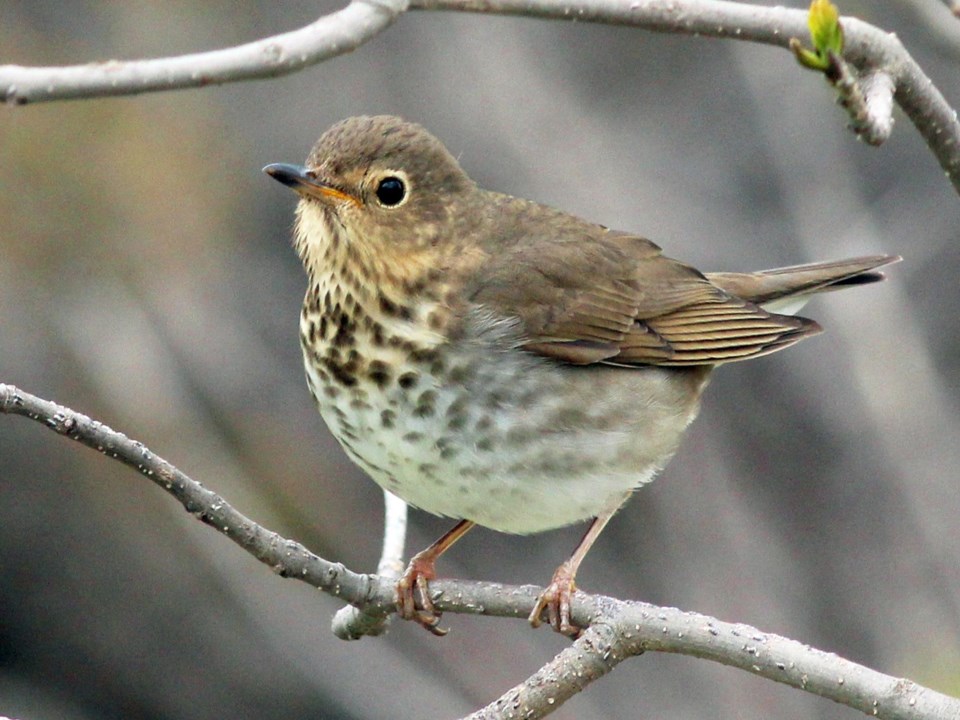Thrushes are a cosmopolitan family of birds that includes some very familiar and very famous birds. Due to scientific advances in molecular biology and taxonomy, the family has recently been contracted and some famous members such as the European nightingale and the European robin were redesignated to the Old World flycatcher family. On the Sunshine Coast, there are six regularly occurring thrushes.
American robin is the most familiar. Across much of Canada the sighting of the first robin of the year indicates the imminence of springtime. On the Sunshine Coast we have robins year round, though numbers are very low in the depth of winter. During March robins return by the thousands and huge numbers can often be seen by mid-month on rough grassland and other damp grassy areas such as golf courses as they search for worms. Many of the birds pass through the Sunshine Coast, but large numbers remain to nest here. A feature of this is the significant number of people who report robins doing battle with their own reflected image in house windows. The birds fail to distinguish their own reflection from a competitor for the same nesting territory and this is the source of the friction. The best advice is to cover the offending window (on the outside) with anything that cuts out the reflection.
A close relative of the robin is the varied thrush, a common species on the Sunshine Coast though less visible as it prefers the forest to grassland. It is a common summer resident above about 900m elevation but drops down to sea-level in the winter when the forest floor is snowbound in the mountains. A local name of the varied thrush is swamp robin. Varied thrushes have a beautiful quavering, flute-like song and you can hear it now at sunset or perhaps on a walk into a damp forest.
Hermit thrush and Swainson’s thrush are very similar, small, forest-dwelling species that are abundant on the Sunshine Coast. Both are very retiring and the average person will probably never see either species. Hermit thrushes are just beginning to appear, and on migration they are seen at sea-level before settling for the summer in the mountain forests above 900m. Swainson’s thrush is an abundant summer resident at sea-level and everyone has heard their beautiful spiraling song on early summer evenings, though few may ever observe the bird. Hermit thrush, in my opinion, is the Sunshine Coast’s most beautiful songster.
Our two other thrushes are both spring migrants that pass on through our area. Mountain bluebirds are very uncommon with only one or two reports per year usually in late March. April is the month to observe Townsend’s solitaire, a grey bird usually seen perched atop a tree spike or a fencepost. They are attracted to berry-bearing trees such as holly.
To report your sightings or questions, contact [email protected] or 604-885-5539.



